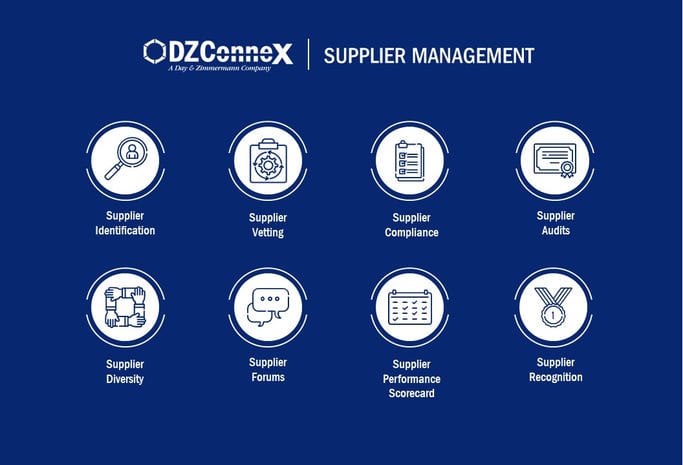Is your contract with your current Managed Services Provider (MSP) coming to a close within the next few months? If so, it might be time to re-evaluate your MSP, even if you were considering extending your contract. As you decide whether or not to move on to a new MSP, there are several questions you should be asking yourself, such as: What technology has my MSP brought to the table? Have they successfully exceeded my staffing needs and expectations? How has my organization changed since we introduced this MSP? There's a lot to consider when it comes to deciding whether to keep or expand your MSP partnership or to switch to an entirely new provider.
Here are 5 signs that it might be time for you to switch your MSP.
1. Your MSP is Slow with Innovation
The market is constantly shifting, which means that your MSP should be constantly evolving. If your MSP has stayed the same over the last several years, it's time to try something new.
Your MSP should offer you a strategic roadmap that will give you several options for not only today but also for the future. Creating a detailed roadmap for the present and the next generation ensures continuous evolution and innovation, which will increase your value. For DZConneX (DZX) personally, our roadmap approach has proven to be extremely successful for our customers.
The roadmap also applies to technology. Technology is always changing, so if you're still using the same technology you used years ago - that's a problem. The technology that your MSP offers should help your organization perform more efficiently, and it should be suited for your organization specifically. You should find an MSP whose technology provides insight into your talent acquisition process and workforce. It should enable visibility into your talent lifecycle, productivity measures, spend data and analytics. Having access to real-time on-demand data concerning quality, efficiency, and cost in order for your MSP to determine areas for improvement and make strategic recommendations will make for a successful program.
2. There Have Been Multiple Compliance Issues
It probably goes without saying − if there have been multiple compliance issues, it's probably time to move on. When it comes to managing talent, there are a lot of different aspects to consider, but it's essential that every detail from metrics reporting to supplier management and more, is properly evaluated and 100% compliant. One faulty part of the program can bring down the rest of it.
3. A Lack of Communication Regarding Pay Rates or Other Costs
If your MSP isn't consulting with you on what pay rates should look like, it's almost certain that you're going to end up with rogue spend, possibly through Statement of Work (SOW). When it comes to services procurement, it's essential to have a partner that can effectively develop and manage an integrated process to ensure you that any SOW engagements are appropriately classified, agreements are accurately written, vendors are properly engaged, and services are efficiently delivered.
It can be difficult for organizations to manage SOW or any service procurement component on their own, so working with an experienced talent team will help your organization immensely. When it comes to services procurement, it can be hard to identify, manage, and control all services procurement spend because of misleading contracts, unaccounted for talent, and more. If you're reading this and thinking that your MSP partner is not a sourcing and contracting expert, it's time to look for a new one.
4. The Relationship Feels Transactional
One warning sign that it's time to switch your MSP that might not come to mind right away is if the relationship is starting to feel transactional. Meaning, there isn't a lot of communication or innovation (as mentioned above), and you're feeling like you're just another customer. Your MSP should be offering a dedicated team of talent management specialists who are dedicated to your organization and willing to consistently evolve your program. They should be leveraging technology, the supply chain, and your existing resources to provide the best talent possible. This requires going above and beyond a simple transaction.
5. The Suppliers are More About Quantity Instead of Quality
Quality over quantity, always. As tempting as it may sound to have 30-40 suppliers, that's not always the best strategy for your organization. It's often better to have fewer suppliers who essentially have more stake in the game. This will ensure that they're putting quality resources forward more quickly. Plus, the fewer suppliers you have, the more you can make sure that they fully understand your organization. Your MSP should be keeping their standards high and holding suppliers accountable to keep your program running smoothly. If you're noticing a high number of suppliers along with a high turnover percentage within your current program, it's time to consider another MSP.
For example, if DZX was your MSP partner, we would offer the following when it comes to Supplier Management.

As you can see, there are so many different pieces of the program to consider when it comes to deciding whether or not it's time to switch your MSP. It might be tempting to stick with your MSP if they run part of your program flawlessly but not in totality. However, you deserve excellence in every component that makes up the entirety of your MSP program.
If you are considering a new talent partner, learn more about DZX and what we can offer as your MSP here.



%20Size%20Photos/Businesspeople%20discussing%20notes.jpg)



